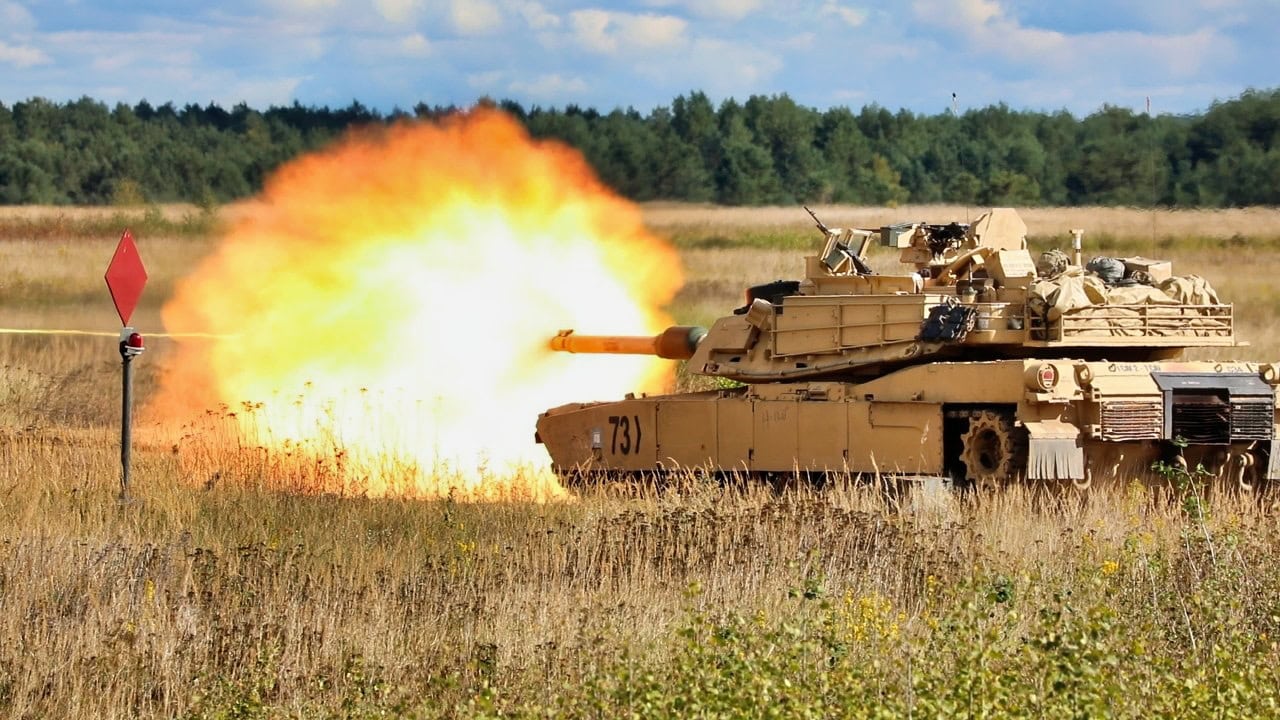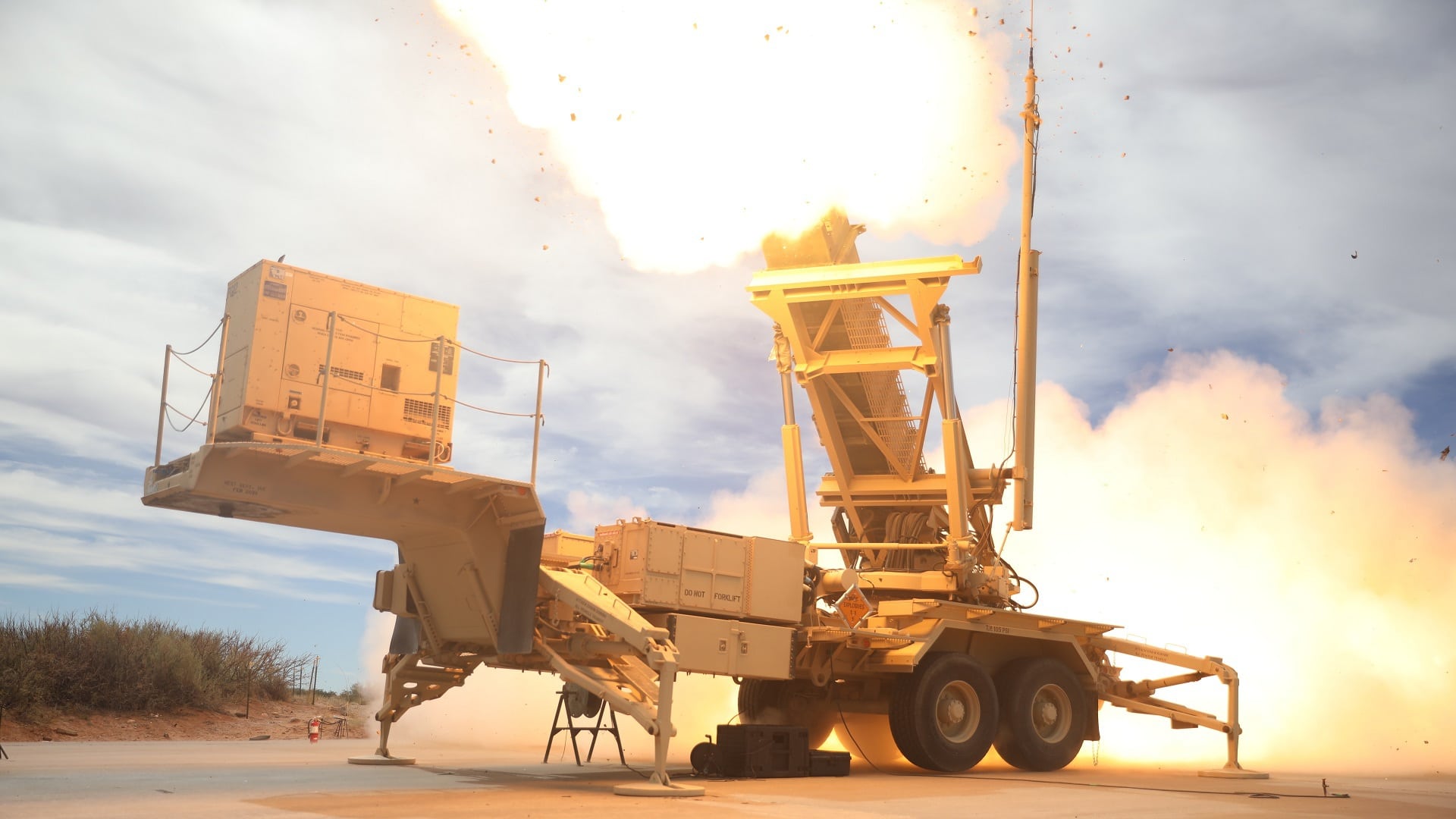To begin with, NATO is in better shape today than the alliance was for most of the Cold War. Europeans need to stop fretting about the ability of the transatlantic community to defend itself and start getting serious about how to retain a political-military advantage over Putin’s Russia as we progress into the 21st century.
God is on the Side of the Biggest Battalions
The value of military power is always relative to that of the enemy. Today, NATO is in better shape than during the Cold War when the alliance spent way more on defense and fielded massed armies that would have cowed Napoleon. NATO is better off because the coalition faces a Russia that is worse off.
In contrast to the Cold War, when NATO’s frontline was in the middle of Germany in the heart of Western Europe, today’s alliance has way more strategic depth, and NATO deep strike assets are much closer to ranging far deeper into Russian territory. Rather than being able to start a war on the midfield line, like the Soviets, Putin would have to invade Europe from his own endzone.
Putin faces a much broader front than during the Cold War. With the addition of Sweden and Finland, Russia has another thousand miles of flank that the Motherland cannot ignore.
During the Cold War, Russia was a threat in the Baltic Sea and pretty much owned the Black Sea. Today, the Baltic Sea is more a NATO lake and the Russian military has been chased out of much of the Black Sea.
Any Russian attack on NATO would also have to factor in Ukraine. Whether Ukraine is in NATO or not is irrelevant. No Russian army could strike NATO and be confident it could just wave at the Ukrainians while driving by. Indeed, an attack on the Baltic States today would be more like a charge into the valley of death with capable adversaries on both flanks.
Poland, a keystone frontline state, is committed to fielding a formidable military that can defend Polish territory. The Romanians are building a more capable military to anchor the Eastern Flank.
As matters stand today, NATO, in aggregate, has a favorable correlation of forces compared to Russia.
Finally, the US has bipartisan support for strengthening and maintaining the American strategic nuclear umbrella. This immeasurably improves the alliance’s strategic posture—if NATO maintains a strong conventional deterrence. A clear lesson of Russia’s war against Ukraine is that if you can’t win a conventional war, you don’t start a nuclear one. The more Putin finds he can’t beat NATO’s conventional forces, the more likely it is that Russian forces will stay in Russia.
NATO 2.0
NATO, albeit not intentionally (but as a response to the invasion of Ukraine), has moved from a tripwire strategy intended to spook Putin into not testing Article V to a warfighting strategy that makes it not only unlikely that Russia could win a quick war but a serious doubt Moscow could win any war against the alliance.
The alliance’s task now is to sustain that advantage over time, restoring and sustaining conventional deterrence at an acceptable cost. We can be confident that is going to happen. For starters, US President Donald Trump will not let the Europeans slack off. He is not going to abandon Europe as many fear, nor will he go back to providing free security as many would like. He will choose a third way: to beat the Europeans into submission until they do the right thing.
There is a second reason that Europe will do the right thing, and that is because the right thing is totally doable to keep the West ahead of the rest.
Russia’s war against Ukraine offers a lot of lessons of what is needed in NATO 2.0.
For starters, NATO needs a lot more deep attack assets. The alliance will never have the manpower to fight a war of attrition. Instead, most of an invading army needs to be killed before it crosses the NATO frontier. In partnership with the US, Europe can field a very formidable deep attack arm.
Next, another lesson of the war in Ukraine is that European nations need to be able to defend their population centers and infrastructure from air and missile attacks. Ironically, most of the haranguing of the US goading allies to spend more will be to spend more to defend their own peoples and homelands from the kind of attacks from the air inflicted on the Ukrainians and Israelis. These assets are costly, but the US-NATO should be able to field its own version of an Iron Dome in partnership.
Logistics are the lifeblood of war. Europe needs north-south infrastructure that supports the new NATO front. Europe also needs this infrastructure to drive economic growth in Europe. So there are many dual-use investment in rail, pipelines, ports, highways, and airfields that ought to be no brainers for Europeans.
Europe needs to become an arsenal of democracy. Another lesson of the war is no one was prepared to sustain the munition expenditures for a serious conflict. Having an arsenal that can produce bombs and bullets at scale is part of an effective deterrent structure.

U.S Army troopers assigned to 3rd Armored Brigade Combat Team, 1st Cavalry Division fire the M1A2 SEPV3 Main Battle Tanks as part of gunnery qualification, Sept. 22, 2022, on Mielno Tank Range, Drawsko Pomorskie Training Area, Poland. Training like this ensures the units readiness in order to provide combat-credible forces in support of NATO allies and regional security partners. (U.S. Army Photo by Staff Sgt. Charles Porter)
Every nation in NATO, including the US, needs real growth to sustain defense expenditures. That means fewer regulations, more pro-growth policies, and serious energy policies that deliver reliable, affordable, abundant energy. These policies will deliver both more guns and more butter. That should not be a hard sell.
Finally, Russia won’t stop being bad because it can’t comfortably invade Lithuania. The Russians will happily throw spaghetti at the wall with all kinds of hybrid threats and disinformation operations to undermine the solidarity and stability of NATO. The Chinese will be happy to help them. The answer for NATO is simple—deal with it.
NATO’s Next Fifty Years
So many are fixated on how the Ukraine war ends will define the future of NATO. That is unlikely. If there is a deal it will likely be ambivalent not securing Ukraine’s future nor is it likely to hand Putin at the negotiating table anything he couldn’t win on the battlefield. The future of NATO will be largely determined by what NATO does next. If it completes the to-do list, then both NATO and Ukraine will have a more peaceful and prosperous future.
About the Author: James Jay Carafano
Dr. James Jay Carafano is a leading expert in national security and foreign policy affairs. Carafano previously served as the Vice President of Heritage Foundation’s Kathryn and Shelby Cullom Davis Institute for National Security and Foreign Policy and served in the US Army for 25 years. He is an accomplished historian and teacher as well as a prolific writer and researcher. Follow him on X: @JJCarafano.

